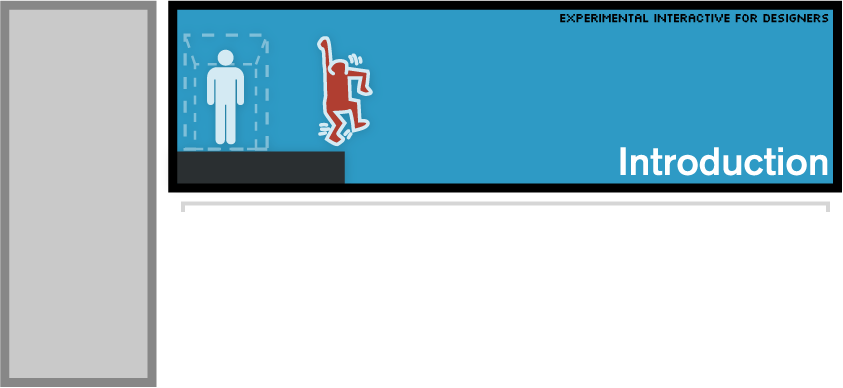Synopsis
This course provides conceptual frameworks and practical knowledge for designers to break out of the browser and create truly experimental, interdisciplinary interactive work. Discussions of 2d and 3d imaging concepts, tangible computing will tie-in with practical, hands-on exposure to the Processing programming environment.
Introduction
Industry-standard protocols and packages have always limited designers' ability to experiment. Incremental upgrades and improvements to existing frameworks do occur year after year, but the truly ground-breaking, experimental interactive design is happening outside the realm of the commercial flash/html experience. While industrial-engineers, computer-science majors and communications researchers explore the boundaries of what our science and technology can do for us, designers come into play only once the research has been pulled back far enough from the edge for commerce to embrace it. This is not to say that interactive designers cannot create experimental work without an engineer at the wheel. The key, is to take stock in all the rules you follow as a designer, and to shed the ones that get in the way of your vision. The following, are a series of guidelines to get you started:
|
Be inspired: Choose the User: Figure it out: Ask Questions: Fake it: |
It is important to analyze your own design process, and be open minded to observing organic systems design principles such as these when you begin working with the new, more advanced interactive tools, techniques and processes. Very seldom will your programs work on the first try, and designers tend to code themselves into corners. However, with some time an energy spent learning the basics of good programming form, you should have a pretty good idea of when to figure it out, and when to fake it. Nobody ever said breaking out of the browser was going to be easy.
Good luck.
